One man’s Peranakan pride, hidden in the heart of Joo Chiat
Peranakan culture has seen a resurgence of interest of late, with it being spotlighted in local television shows like The Little Nyonya and Emily of Emerald Hill, while Singapore also hosts the world’s first and only Peranakan Museum. We pay a visit to The Intan, an iconic heritage home museum that punches above its weight.
- 16 Apr 2024
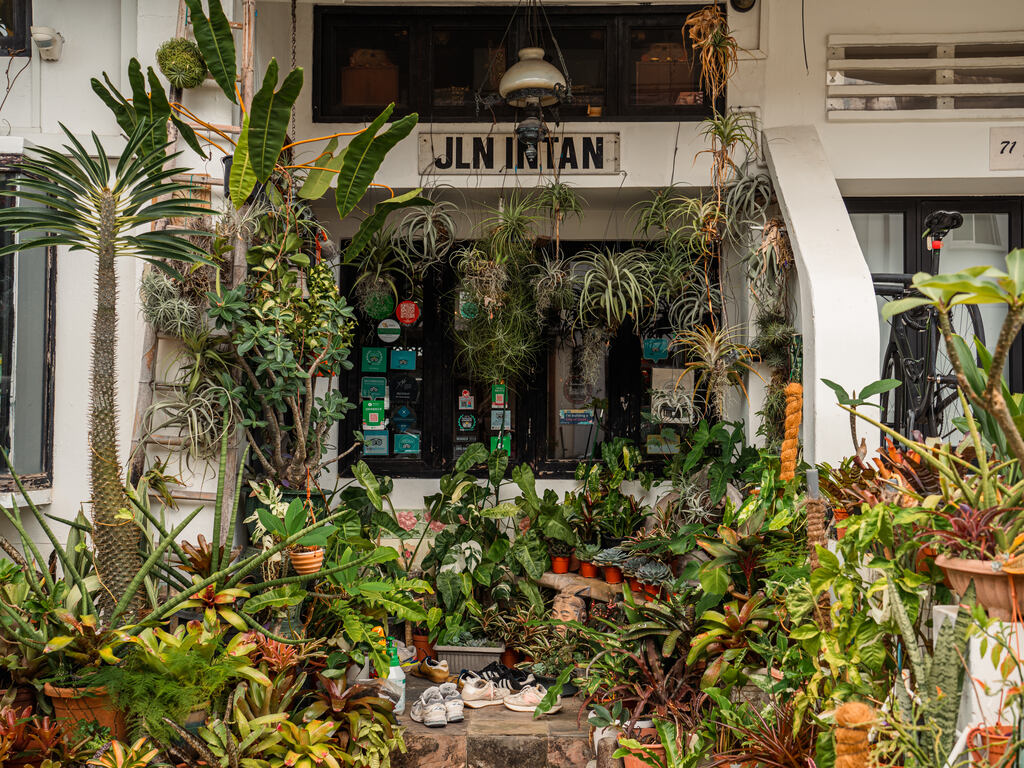
The entrance of The Intan.
In an unassuming corner of Joo Chiat, there lies a seemingly nondescript house framed by a plethora of verdant potted plants that line the driveway. Upon closer look, there are signs that this is not your ordinary residence. Parked along the street is a large tour bus, and two dozen pairs of shoes are neatly placed outside the main door.
The main door swings open and guests in office wear spill out. They hastily organise themselves in the narrow driveway to take a group wefie with a man in a batik shirt.
The main door swings open and guests in office wear spill out. They hastily organise themselves in the narrow driveway to take a group wefie with a man in a batik shirt.
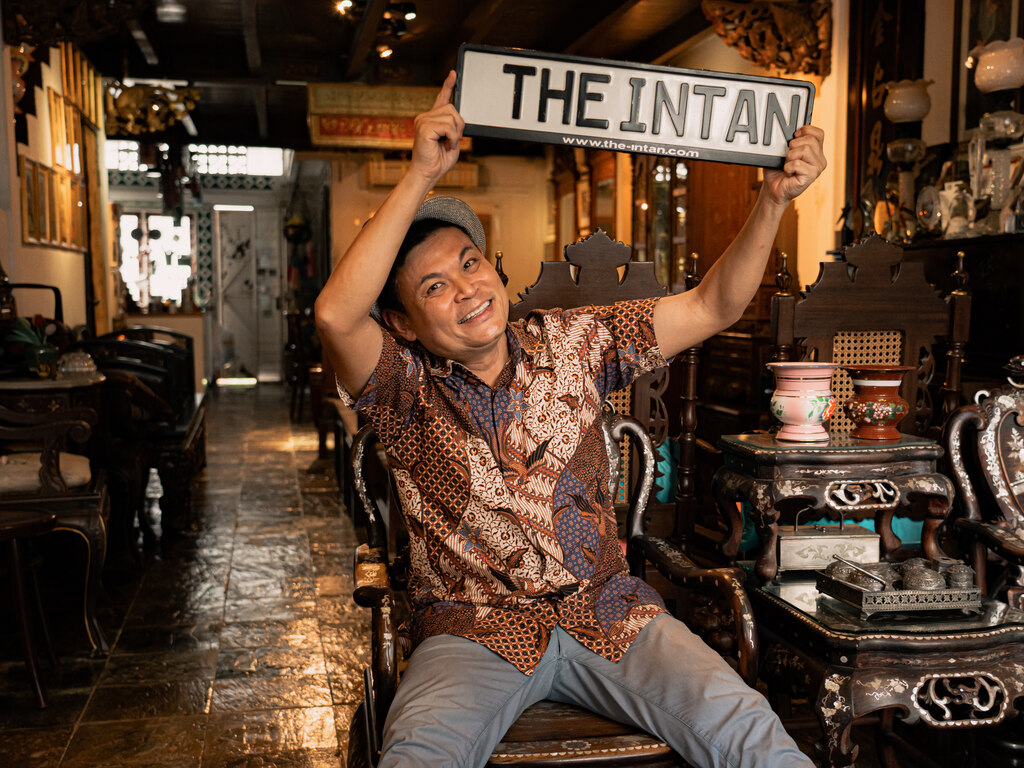
Alvin sitting near his main door.
The man is Alvin Yapp, founder of Peranakan heritage house museum The Intan. After sending his guests off, he enthusiastically greets us without missing a beat, leading us away from the scorching heat and into the cool air-conditioned comfort of his home. Once our eyes adjust, we find ourselves in a living room packed to the brim with beautiful Peranakan artefacts at every turn, from furniture, porcelain ware, everyday items, clothing and homeware.
As we sit down, Alvin offers us hot tea and a beautifully plated assortment of traditional kueh like kueh bingka ubi and kueh salat. Expressive and chatty, Alvin immediately puts us at ease. The experience feels intensely personal.
As Alvin begins the tour, he poses us with a challenge.
“My storytelling is about what matters to you. I always let my visitors lead the visit…Why don’t you look around and see what catches your eye?” Alvin quips.
Surveying the room, it is easy to get overwhelmed by the sheer treasure trove of objects, each with their own unique histories and legacies.
A row of gorgeous designed tiffin carriers in green, blue and pink with intricate motifs, placed along the stairs, catches our eye. Used by the Peranakans to pack their meals, we are surprised to learn that tiffin culture was adopted by the British from India and brought to Singapore.
As we sit down, Alvin offers us hot tea and a beautifully plated assortment of traditional kueh like kueh bingka ubi and kueh salat. Expressive and chatty, Alvin immediately puts us at ease. The experience feels intensely personal.
More than meets the eye
We are here to learn about Peranakan culture, which has taken on the status of cultural identity and refers to a range of mixed heritage communities. Their unifying trait is the melding of ancestral cultures — Chinese, Indian, Arab, European, and others — with the indigenous cultures of the Malay-Indonesian archipelago.As Alvin begins the tour, he poses us with a challenge.
“My storytelling is about what matters to you. I always let my visitors lead the visit…Why don’t you look around and see what catches your eye?” Alvin quips.
Surveying the room, it is easy to get overwhelmed by the sheer treasure trove of objects, each with their own unique histories and legacies.
A row of gorgeous designed tiffin carriers in green, blue and pink with intricate motifs, placed along the stairs, catches our eye. Used by the Peranakans to pack their meals, we are surprised to learn that tiffin culture was adopted by the British from India and brought to Singapore.
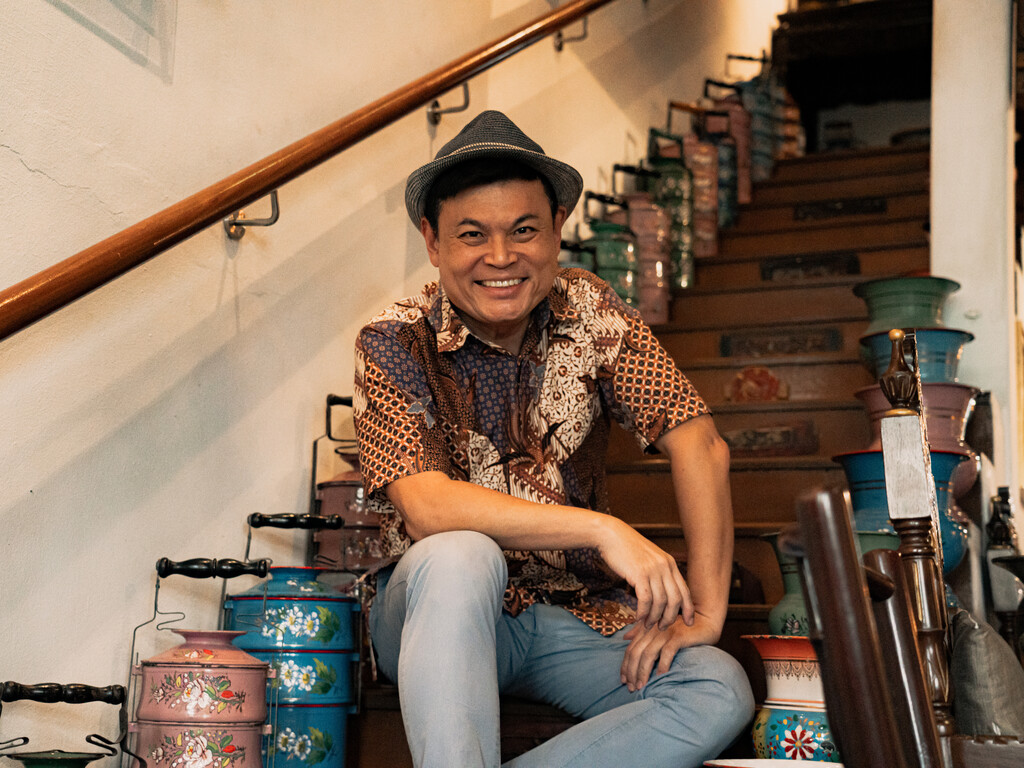
Alvin sitting on his stairway, bordered with spittoons and tingkats (tiffin carriers).
We gingerly make our way upstairs to view more of his personal collection, where no cameras are allowed. Dainty slippers with intricate beadwork sit pretty behind glass cabinets, and heavy Peranakan teak furniture carved with luxurious designs make an impressive display.
The consummate storyteller, Alvin eagerly shares his knowledge and anecdotes of his culture.
Hosting tours appears to come easy to Alvin, with his naturally gregarious personality and years of experience hosting groups in his home that range anywhere between small to large groups.
He thrives on the energy and curiosity of the group, lobbying the occasional question to us here and there. We learn that he runs The Intan entirely on his own, even dusting down and cleaning every single piece! He shrugs it off. To Alvin, running a museum isn’t about putting nice things on display, but finding ways to make the experience interesting and relevant for everyone.
”When you love something as much as I do, it’s not so much work but a passion,” he says.
A lover of all things vintage from a young age, Alvin began scouring for antique pieces from shops, antique dealers and auctions. Over 30 years, he amassed over 5,000 items once belonging to the Peranakans. He decided to found The Intan in 2003, and people began coming down to view his precious collection.
The consummate storyteller, Alvin eagerly shares his knowledge and anecdotes of his culture.
Hosting tours appears to come easy to Alvin, with his naturally gregarious personality and years of experience hosting groups in his home that range anywhere between small to large groups.
He thrives on the energy and curiosity of the group, lobbying the occasional question to us here and there. We learn that he runs The Intan entirely on his own, even dusting down and cleaning every single piece! He shrugs it off. To Alvin, running a museum isn’t about putting nice things on display, but finding ways to make the experience interesting and relevant for everyone.
”When you love something as much as I do, it’s not so much work but a passion,” he says.
A culture that holds space for dialogue
Some people might be surprised to know that Alvin’s journey with The Intan was an “accidental one.”A lover of all things vintage from a young age, Alvin began scouring for antique pieces from shops, antique dealers and auctions. Over 30 years, he amassed over 5,000 items once belonging to the Peranakans. He decided to found The Intan in 2003, and people began coming down to view his precious collection.
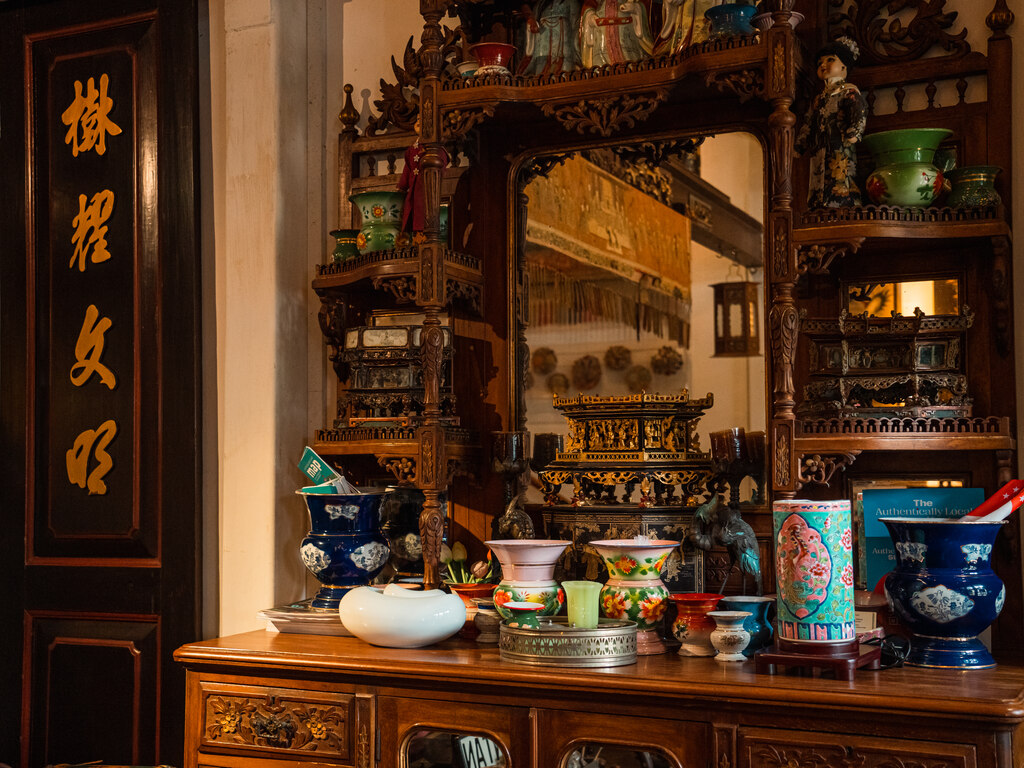
Part of Alvin’s antique collection on display.
To Alvin, The Intan has a unique role to play in Singapore's museum ecosystem, alongside state custodians like the Peranakan Museum and Baba House. He believes that the Peranakan culture should be lived and experienced every day, and The Intan is one way of facilitating these exchanges.
“Whether you have a shop, restaurant, bathroom, or a playground, I use my forte to ‘Peranakanise’ things… I think about how to bring in the Peranakan culture, in an authentic and respectable way,” he explains. Some of his past projects include conceptualising Singapore’s first Peranakan-themed playground, a Starbucks -The Intan collaboration selling merchandise at over 140 outlets, transforming Fullerton Hotel’s heritage rooms, a Peranakan children’s book collaboration with a primary school, and organising a children’s violin recital of Peranakan songs to raise funds for charity.Just as the Peranakans themselves were inspired by the east and west and everything in-between, Alvin invites us to question what it means to be Peranakan and to re-conceive it for ourselves. In doing so, he hopes to inspire a new generation of Peranakans, artists, craftsmen and future collaborators, locally and globally.
He says, “There’s no bible that dictates what Peranakan culture is. If you want to see the culture flourish, you have to accept there will be different interpretations and variations of how to represent it.” My mission is never to convince anybody to be Peranakan… Whether it’s sharing values of sustainability, racial harmony, or perseverance, I hope to use The Intan and my Peranakan culture as a platform to contribute back to society.”
Seeing the personal in the Peranakan
As Alvin leads us back to the dining area downstairs, we remark that Alvin’s painstaking sourcing of second-hand heirlooms and giving it a second life is the epitome of sustainability.
Alvin lights up as he relates a story about how a wealthy Indonesian collector had finally sold him a beautiful kamcheng (a porcelain storage jar used by the Peranakans to store water, desserts or soup), after years of persuasion.
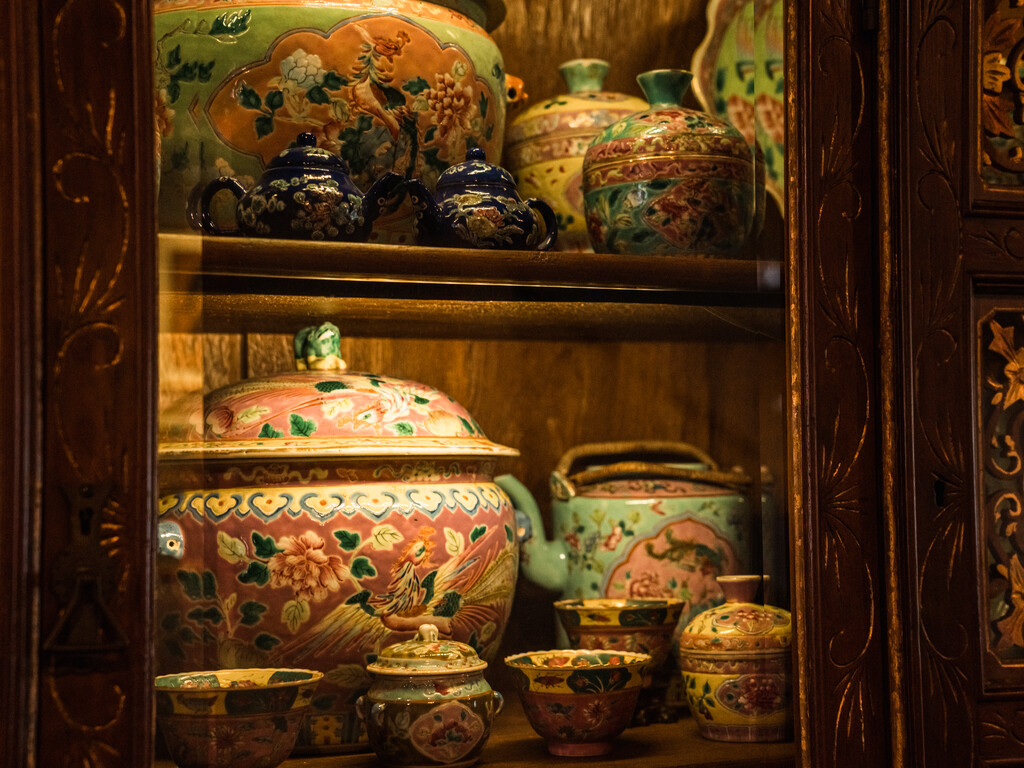
Kamcheng (porcelain jar) displayed in the centre of Alvin’s home.
Never underestimate the patience and persistence of an antique collector,” Alvin says, with a twinkle in his eye.
During a visit to his home years later, the lady was delighted to see that Alvin had made the kamcheng as the centrepiece in his collection. That night, she went home to admire her antique collection, seeing it with new eyes again.
“To you, it might look like such an object, but it was something that our grandparents and great grandparents sacrificed to make. They’re not just physical pieces, but salvaged memories,” he said.
The time flew by and two hours later, Alvin sees us to the door, where we leave with some reluctance.
That afternoon, we entered the space as strangers wanting to learn about Peranakan culture. But this charming museum with a tremendous heart had gifted us with so much more — a newfound sense of wonder, curiosity and a clarion call to probe deeper into our own identity.
During a visit to his home years later, the lady was delighted to see that Alvin had made the kamcheng as the centrepiece in his collection. That night, she went home to admire her antique collection, seeing it with new eyes again.
“To you, it might look like such an object, but it was something that our grandparents and great grandparents sacrificed to make. They’re not just physical pieces, but salvaged memories,” he said.
The time flew by and two hours later, Alvin sees us to the door, where we leave with some reluctance.
That afternoon, we entered the space as strangers wanting to learn about Peranakan culture. But this charming museum with a tremendous heart had gifted us with so much more — a newfound sense of wonder, curiosity and a clarion call to probe deeper into our own identity.



